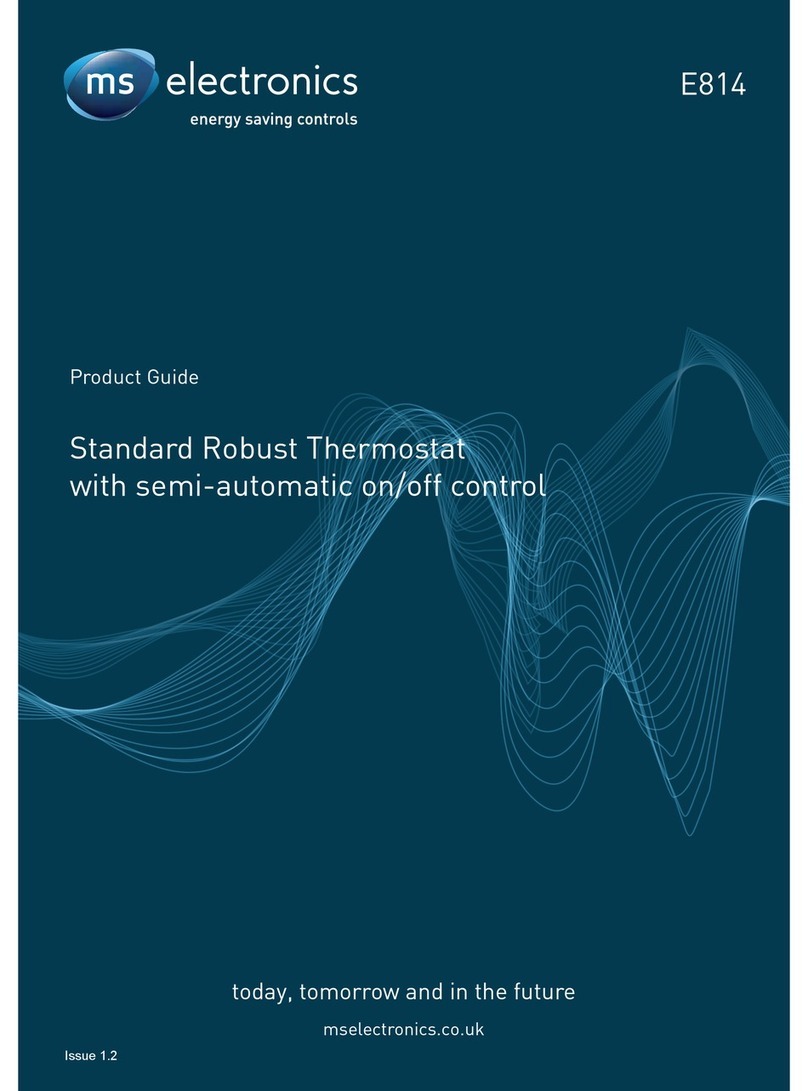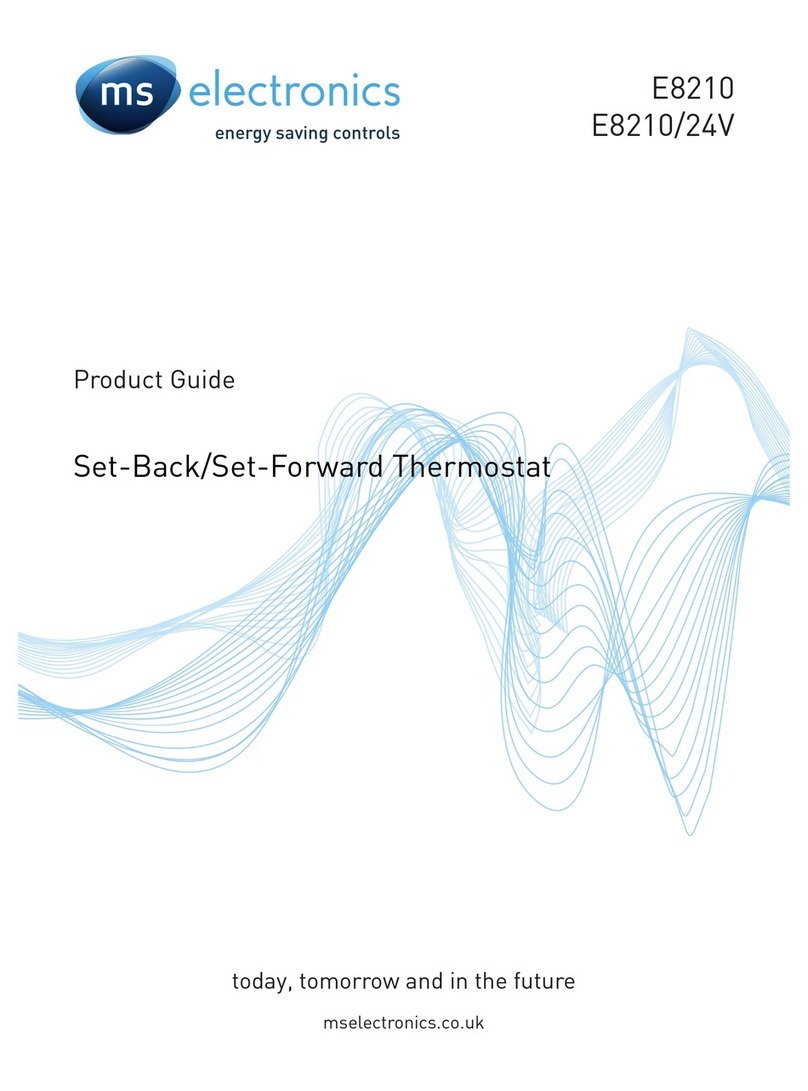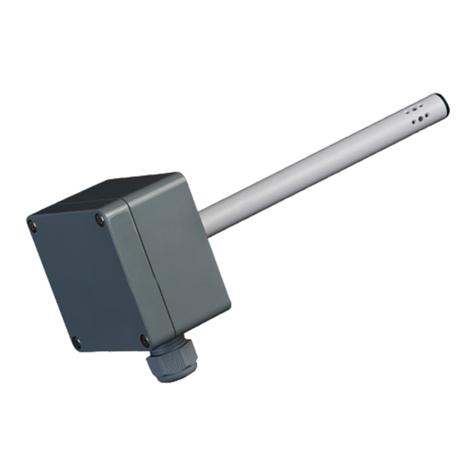3Issue 1.1
Figure 2 Typical Wiring Diagram
Product Wiring
1. IMPORTANT: ensure all electrical connections are isolated before commencing any work on
the unit.
2. Power to the thermostat is provided via the Live and Neutral input terminals labelled “L” and
“N” (85 - 265V AC, 50 - 60Hz).
3. NOTE: This thermostat MUST be earthed using the earth terminal provided.
4. Two voltage-free relay outputs capable of switching loads of up to 10A, 250V AC (resistive) are
provided by the thermostat for controlling a fan convector.
5. The “FAN” terminal is connected to the “HI” terminal when the thermostat has selected the High
fan speed, conversely, it is connected to the “LO” terminal when the Low fan speed is selected.
6. The “COM” terminal is connected to the “TX” terminal when the fan is to be On, conversely it is
disconnected when the fan is to be Off.
7. The “Remote Switch” input selects the ‘High’ Set-Back mode when it is closed and the ‘Low’
Set-Back mode when it is open.
8. The temperature sensor is factory !tted to all models with the exception of the Remote Sensor
(/RS) versions. A 2-core screened cable connection should be made to the “Temp. Sensor”
terminals on /RS versions, with the screen connected to the thermostat Earth terminal only.
9. CAUTION: The remote switch and temperature sensor inputs are not electrically isolated from
the thermostat mains supply and so could possibly be at mains potential. Treat the inputs with
the necessary safety and insulation precautions as if they were at mains potential.
Installation
1. IMPORTANT: ensure all electrical connections are isolated before commencing any work on
the unit.
2. Unscrew the 4 security screws using M.S. Electronics tamperproof screwdriver MSD-152 to
remove the front cover.
3. Mount the unit securely using any suitable !xing in conjunction with the mounting holes
provided in the unit. For optimal results, position the temperature sensor out of direct sunlight
and well away from any heating/cooling sources.
4. Using Figures 2 to 5 as a guide, connect the wiring in a suitably appropriate form with the
convenient pluggable terminal blocks provided. Contact Technical Support with the heater
make and model number for speci!c help if a suitable wiring method is unclear.
5. On the remote sensor version, 2-core screened cable should be used to connect the remote
sensor to the thermostat. The screen should be connected to the earth terminal ONLY (do not
connect the screen to anything at the remote sensor end).
6. Adjust the internal controls to suit the operational requirements (see the ‘Operation’ section).
7. Replace the cover securely using the 4 security screws.




























